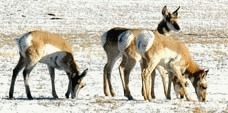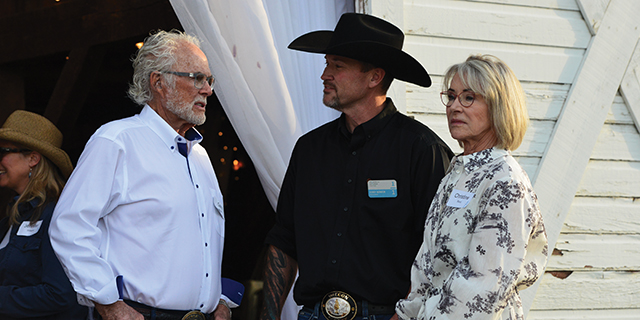HOME, HOME ON THE MARSH
Published 12:00 am Friday, February 10, 2006

- The pronghorns can often be seen along Pierce Road between B&K Salvage and the Ladd Marsh Wildlife Area headquarters. (ODFW photos/CATHY NOWAK).
Dick Mason
The Observer
The pronghorn antelope, the fastest animal in North America, is fast becoming a winter favorite at Ladd Marsh Wildlife Area.
A small herd of pronghorns are spending the winter at Ladd Marsh for the first time in recent memory, said Cathy Nowak, an Oregon Department of Fish and Wildlife biologist.
The pronghorns can often be seen along the approximately mile-long stretch of Pierce Road between Bandamp;amp;K Salvage and the wildlife area headquarters. Many motorists are pulling over to view the herd this winter.
The antelope appear comfortable standing within 50 yards of the road, Nowak said
The six pronghorns wintering at Ladd Marsh are part of a herd of about 28 that spent the summer at Ladd Marsh before moving south to the Craig Mountain area. For some reason these six, who appear to be does, stayed behind for the winter.
Pronghorns have been coming to Ladd Marsh for each summer since at least 1994. Initially, they would give birth to fawns and then leave in a few weeks, Nowak said. Later, the pronghorns began staying longer and longer.
The number of antelope coming to Ladd Marsh in the summer was about a dozen a few years ago but has steadily been increasing. The antelope are coming from the North Powder-Telocaset-Thief Valley area that has the open terrain pronghorns like.
andamp;quot;People are not surprised to see them there, but they are surprised to see them at Ladd Marsh,” Nowak said. andamp;quot;They are still a novelty here.”
At Ladd Marsh the pronghorns do not seem particularly leery of people.
Still, they can be frightened by people. Viewers are urged to avoid doing anything that might jolt them.
andamp;quot;If they are spooked, they may run into the road,” Nowak warned.
The pronghorn, which can reach speeds of at least 70 mph, is the second fastest mammal on earth. Only the African cheetah, at 72 mph according to some experts, is faster.
What truly sets the pronghorn apart, however, is its endurance. A pronghorn can maintain a 60 mph pace for three or four minutes, according to the North American Pronghorn Foundation in Rawlins, Wyo., web site: www.antelope.org/pronghorn1.htm.
People are surprised to see pronghorns at Ladd Marsh because they are an animal of the prairie and sagebrush. Nowak believes pronghorns are coming to and staying at the marsh because there are few disturbances, they are safe and they have plenty to eat.
The North Powder-Telocaset-Thief Valley area the pronghorns are coming from is one where they have a long history reflected in Telocaset’s original name. According to the book andamp;quot;Oregon Geographic Names” by Lewis McArthur, for a portion of the 1800s, Telocaset was called Antelope stage station.





